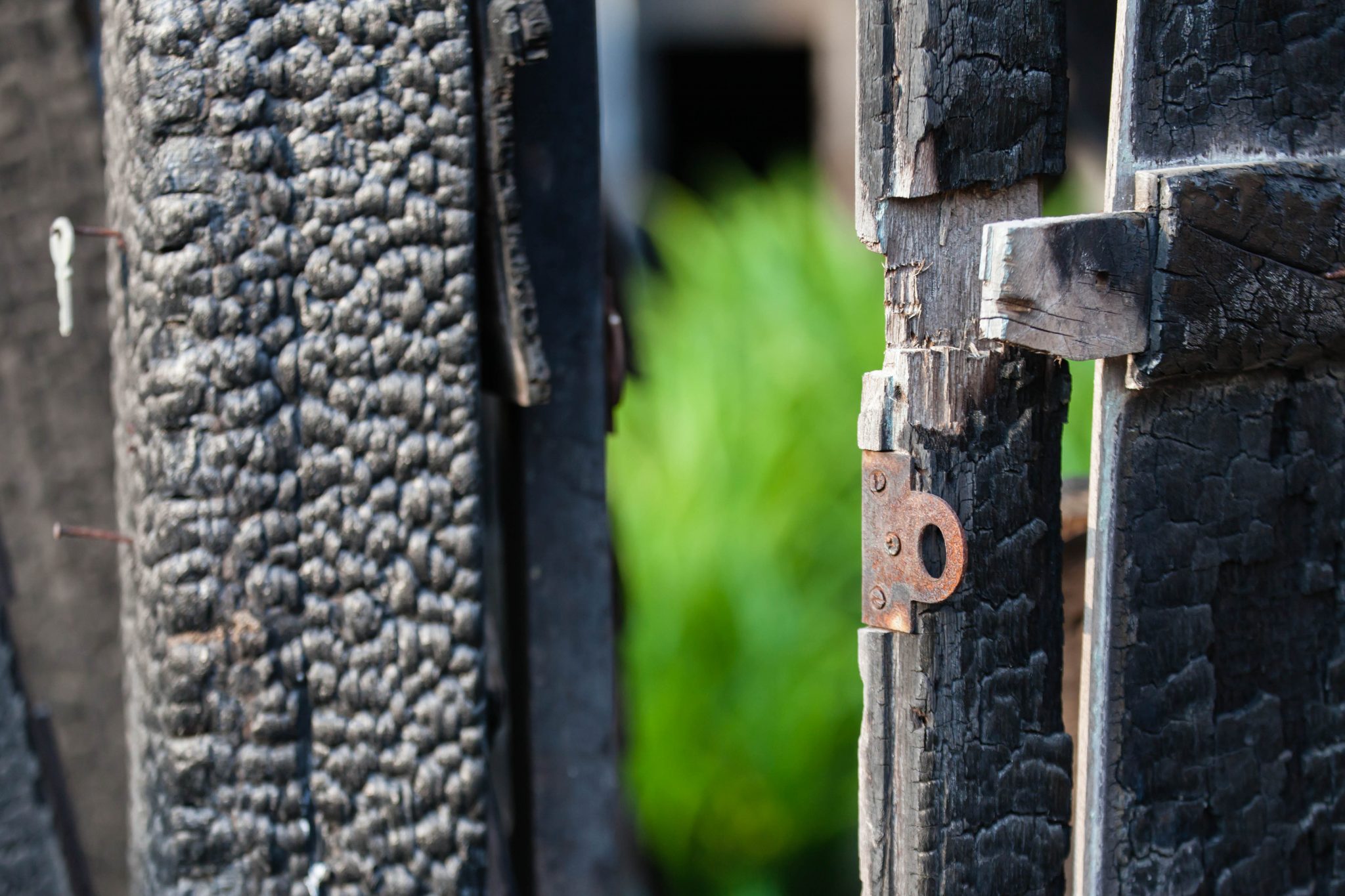Emergency Handbook

Professional conservators offer several basic guidelines for searching for and recovering family treasures in the ruins of a fire. Once you are allowed to reenter the fire area, keep these safety tips in mind:
- Before moving into a fire-damaged building or area, be sure it is safe to enter.
- Wear protective clothing, including nitrile or latex gloves, face masks, and eye protection.
- Avoid breathing in or touching hazardous materials. These include particulates, exposed asbestos, building materials containing lead (lead paint and glass), and chemical residues.
- Avoid inhaling mold. If water has been used to put out the fire or it has rained during or after the fire, mold may have begun to grow.
Soot and ash are abrasive and will scratch your items. Items exposed to both heat and water are even more fragile than if they were exposed to only heat.

When you handle damaged items, remember to follow these guidelines:
- Take photographs of your damaged items and contact your insurance agency as soon as possible to start the claims process.
- Handle or touch damaged items as little as possible. The very fine particles in soot stick to everything, and every touch embeds the soot further into what you are trying to save.
- Wear nitrile or latex gloves because the greasy residue in soot can become permanently affixed to absorbent surfaces by skin oils.
- Lift objects carefully. Avoid weakened areas such as handles or knobs. For example, support ceramics from the base rather than lifting by handles.
- Place items in supportive boxes or plastic containers until you can obtain further advice or are ready to begin cleaning.
Keep in mind that the longer soot remains on an item, the harder it is to remove.
A conservator may be able to help you recover badly damaged items. Find a conservator on the American Institute for Conservation website (www.conservation-us.org). The conservation or preservation department of a major museum, library, or archives may also be able to provide advice.
Used by permission of eXtension.org.
Use pesticides only according to the directions on the label. Follow all directions, precautions, and restrictions that are listed. Do not use pesticides on plants that are not listed on the label. Trade and brand names used are given for information purposes only. No guarantee, endorsement, or discrimination among comparable products is intended or implied by the Alabama Cooperative Extension System. This publication is for information purposes only and should not be a substitute for recommendations or treatment by a health care provider.

